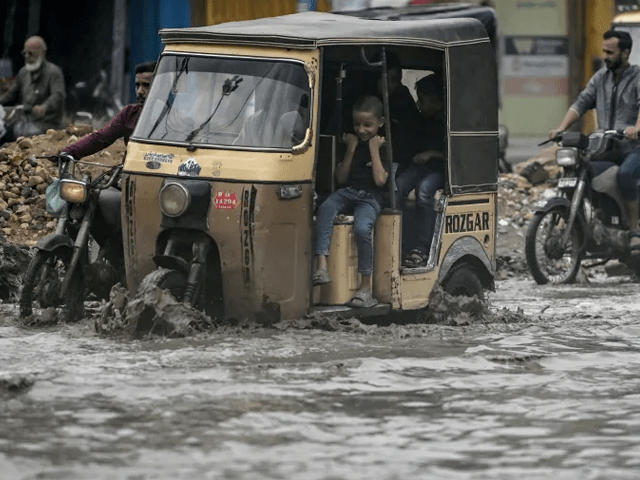Heavy rain and flash floods over Pakistan have killed 45 people in just a few days since the beginning of the Monsun season, disaster management officials said Sunday.
The highest toll was registered in the province of Khyber-Pakhtunkhwa (KP), bordering Afghanistan, where 10 children were among 21 killed.
The disaster control authority said 14 of these victims died in the SWAT Valley, where the media reported that a flash flood swept families away on a riverbank.
In Punjab, along the border with India, 13 fatalities have been recorded since Wednesday. Eight of them were children who died when walls or roof collapsed under heavy rain while the adults were killed in flash floods.
ALSO READ: DC SWAT removed, four officials suspended
At least 11 other deaths related to monsoon rainfall were registered in Sindh and Balochistan provinces. The National Meteorological Service warned that the risk of heavy rain and possible flash rivers will remain high until Saturday.
Last month, at least 32 people were killed in severe storms in the country that experienced several extreme weather events this spring, including strong hailstorms.
Pakistan is one of the world’s most vulnerable countries against the effects of climate change, and its 240 million inhabitants are facing extreme weather events with increasing frequency.
Meanwhile THan National Emergency Operation Center (Neoc), a wing of the National Disaster Management Authority (NDMA), has released several weather warnings such as widespread rain, wind storms and thunderstorms are expected across the country from June 29 to July 5.
V
29 جج ے 5 ججج ک م مک ھON ھON یں ش م م م سHOVEROtt سلائیڈنگ oud ی ن نPO pic.twitter.com/d8apdzqoss
– NDMA Pakistan (@ndmapk) June 29, 2025
Neoc warned of urban floods, flash floods and landslides in several regions, including Islamabad, Kashmir, northeastern Punjab, Potohar region and upper and central Khyber Pakhtunkhwa. Low -lying areas in cities such as Peshawar, Rawal Pindi and Islamabad can be particularly vulnerable between 21:00 and 04:00 on June 29.
Flash flooding and landslides are also possible in the Hazara and Malakand divisions as well as in Jhelum and Poonch Valleys. The rivers Swat and Kabul may experience medium for low -level flood, while ice streams in chitral and Hunza pose additional risks.
In southern Sindh, including Karachi, Hyderabad, Thatatta and Badin, heavy rain is expected from July 2nd, which increases the threat of flooding of cities.
Provincial and district authorities have been asked to stay in high attention and ensure that caution measures and public warnings are effectively communicated.



